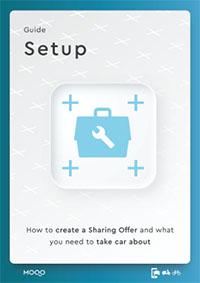Raise awareness of your shared mobility offer, attract new prospects, convince potential users to book your vehicles, retain customers and generate more revenue: there are many good reasons to use marketing targeted for your shared mobility offering. Because regardless of whether your sharing offer is already on the road or still in the planning phase, whether the fleet consists of 10 or 100 vehicles - with the right marketing measures, you can build your shared mobility business and keep it growing.

This article explains which marketing measures are suitable for the shared mobility sector, how you can use this effectively to promote your car, bike, or scooter sharing business, and how MOQO can help.
1. Create Brand Awareness
Only those who are visible will be found: If no one knows about your sharing offer, no one will use it. Therefore, it is essential to make sure that potential users are aware of the offer. The first step is branding: building and shaping a brand.
Branding
Mirko is on his way to the train. Outside the station, he suddenly sees a striking green car with the inscription "Fly Share - sustainable on the road." While sitting on the train, his gaze falls on a poster. He immediately recognizes the green car and the catchy car-sharing logo he had seen before. Over the next few days, he keeps noticing the green cars and researches Fly Share on the internet. He notices that the website has the same design as the poster and the vehicle, and again he comes across the catchy slogan "sustainable on the road". Mirko wants to try out car-sharing and downloads the app - he immediately recognizes it by its design - and then books a ride. Arriving at the parking lot, Mirko immediately recognizes the booked vehicle. Fly Share cars are immediately identifiable by their blue and green livery.
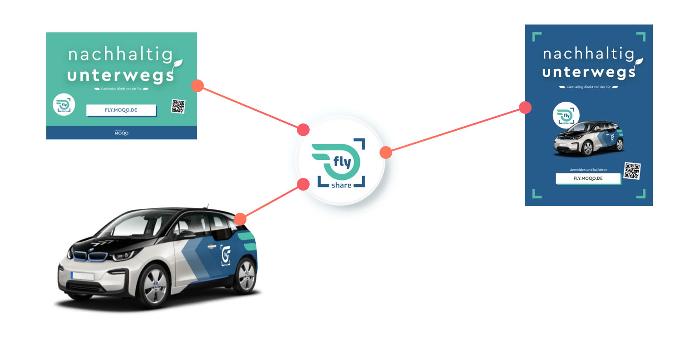
The example of Mirko shows the importance of a well-developed branding: It ensures attention, a high recognition value and differentiates Fly Share from other sharing providers. The aim of branding is also to bind users to the product, i.e. drivers to the shared mobility service.
Branding starts with the name. Other key components are the logo, fonts and company slogans. Although branding is especially important in the beginning, it should be continued consistently thereafter, whether in print advertising, on websites, or in the sharing app. After all, a consistent brand experience can increase sales by up to 23%. (Source: Forbes)
All MOQO elements enable sharing providers to have this consistent brand experience: from the web signup, the Exclusive Sharing Portal, the teams in the app, to the White Label App. The White Label App, is an app that is similar in function and scope to the MOQO App. At the same time, however, it appears in the branding of your shared mobility offer. This way, both employees and customers can immediately recognize the sharing offer.
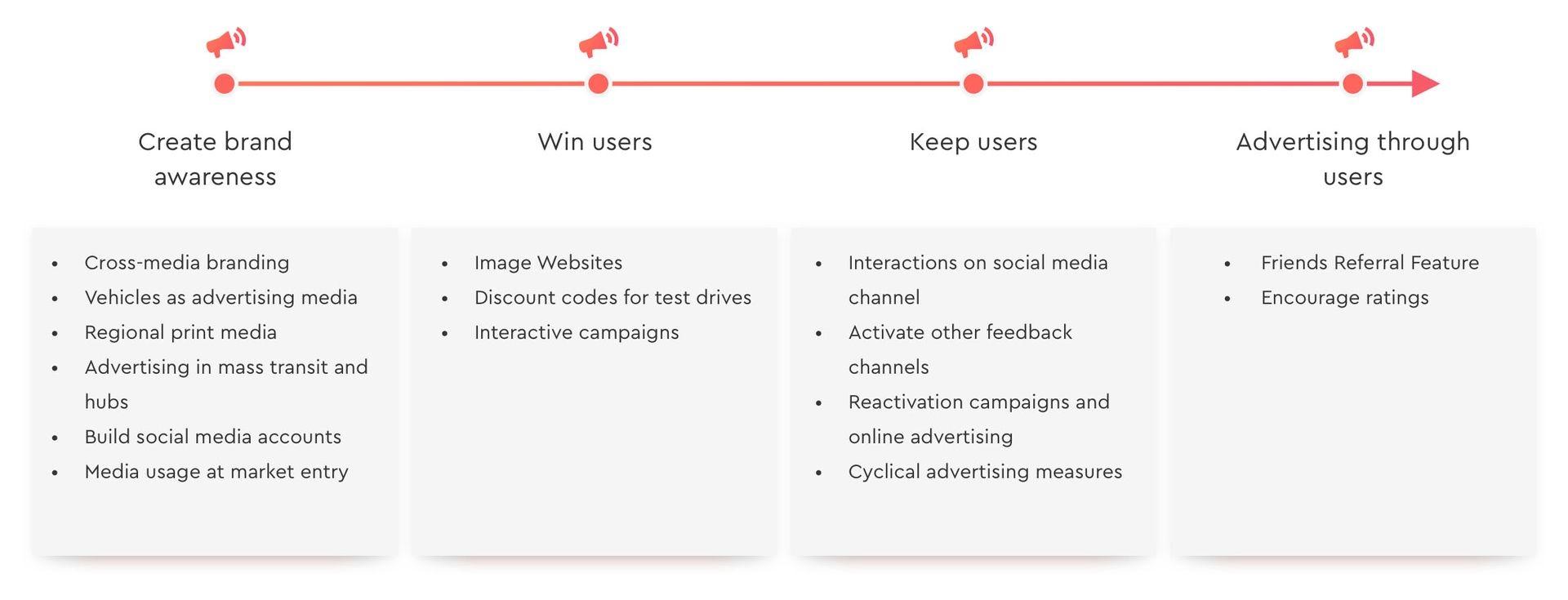
Inform at Important Locations
Classic measures such as outdoor advertising in the form of posters also prove to be useful. These can either be distributed throughout the city or hung up at use case relevant locations, such as train stations or bus stops for commuters. Advertising at intersections is particularly useful for bike sharing providers. After all, commuters are the ideal target group for last-mile offers covered by sharing services. These groups can also be targeted by advertising in trains or buses.
Merano Bike Sharing is a good example here. In addition to outdoor advertising, the operators of the bike sharing have also set up mobility points with free bike checks, as well as running advertising videos on the city's trains.
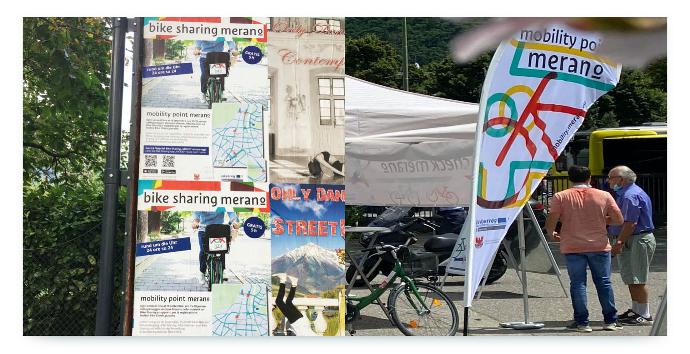
Using Vehicles as Mobile Advertising
In the shared mobility sector, vehicles in particular are an effective marketing tool. Therefore, especially here the branding should be done properly. While the vehicles move from A to B in ongoing sharing operations, the cars automatically advertise the sharing offer, even beyond the city limits. (Charging) stations also offer enough space to be designed conspicuously and according to your wishes.
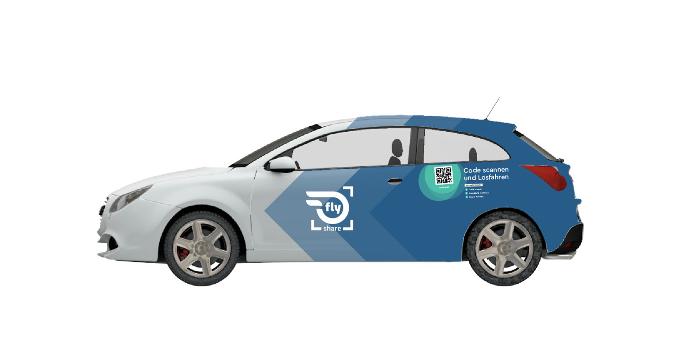
Launch as a Cross-media Event
To make the launch of your shared mobility offer as effective as possible, it should be media-effective. Place regional advertisements and inform the press so that you are reported on and attention is gained for your shared mobility offers.
In addition, your own social media channels can also be used in advance and in the course of your launch to advertise your shared mobility offers.
LeasePlan Netherlands shows how a market launch can be designed creatively and interactively. In the course of their new project, a sharing offer in Amsterdam apartment complexes, all residents of the apartments were involved in the launch. They were able to register for the kick-off event as well as an online pub quiz. Each participating household also received a package of snacks and drinks.
Social Media
Around 4.2 billion people use social media, including approximately half of the German population. As a result, social media offers enormous potential as a marketing tool - no matter what stage the sharing offer is in. By creating an account on one or more social media platforms, you can produce and publish targeted content and market your shared mobility offer. There are no limits to creativity, as long as the content fits your offer and target audience.
Examples of exciting posting formats for a shared mobility provider's social media account include "behind-the-scenes" footage of daily shared mobility tasks, photos of the vehicles, driver stories, and tips & tricks. But interactive content such as Q&As or formats in which you directly address the target group with questions such as "Where are you still missing a bike-sharing station?" or "Which of our e-car models do you like best?" are also ideal. This way, you can learn more about your target group and their wishes.
Through social media measures, you can create brand awareness and ensure that your profile’s visitors get a positive impression. At the same time, you can demonstrate your expertise, connect with customers, engage in dialogue, and show that you are trustworthy and approachable.

Giveaways as an Example of Cross-media Promotions
Another marketing activity to raise awareness of your shared mobility offer are giveaways. These are particularly practical and effective when they take place on social media channels. For example, one option would be to raffle off 4 free rides or give away a month of free rides for one or more people. To get into the raffle pot, users have to link other users, comment or like the post.
This is followed by increased interaction with the giveaway post as social media users like, comment, share and tag friends to direct them to the sweepstakes. But other social media users also become aware, as the post about the sweepstakes reaches their Facebook news feeds, for example. This ensures increased awareness of the sharing offer and attracts potential new customers.
2. Trigger Drivers to Use the Sharing Offer
Through effective marketing efforts, your shared mobility offer has now gained awareness. However, this does not necessarily mean that people will use it. In most cases, potential drivers find out about the offer in advance and compare prices as well as conditions of the various providers in the city.
Website
To gain the potential customer at this point, you can use your website to transparently convey your offer and provide answers to any questions.
The Exclusive Sharing Portal provided by MOQO optionally offers a quick solution for this with little effort. Providers can use this to present information about their offer centrally. The Exclusive Sharing Portal also appears in your branding.

Discount Codes
To trigger users to actually use your offer now, discount codes can be a suitable measure. Discount codes provide an indirect price discount that can have a positive effect on demand. In doing so, they can lower barriers to entry, both for users who have never tried shared mobility before and for users of other shared mobility providers. Discount codes can be used by the drivers in a variety of forms: They can be distributed classically via flyers in the city or integrated into the social media measures described above. To coincide with the launch of the sharing offer, MOQO offers options to provide a discount to all drivers who download your sharing app and sign up.
To enable sharing providers to create discount codes independently and flexibly, MOQO offers the Discount Code Manager. Here, providers can independently offer discount codes to their users at a wide range of conditions.
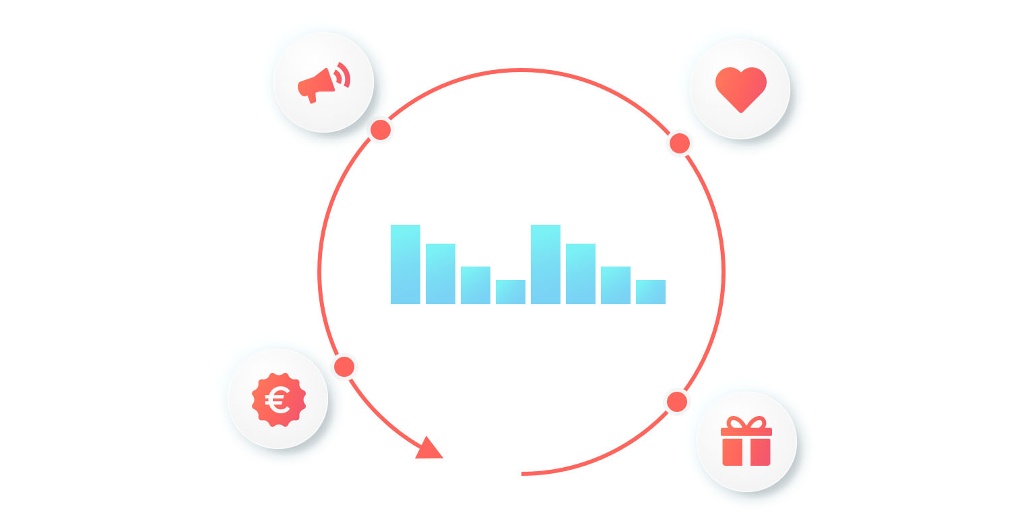
3. The First Drive – What Now?
Once a new user has completed the first ride, the next goal is to make them a loyal user of the shared mobility service.
Communicating With Users
This is another area where social media proves to be useful, as it enables direct dialogue between the sharing provider and the user. In this way, you provide users with a platform where you can answer questions as well as respond to feedback, giving customers the feeling of being heard. This creates a basis of trust, ensures appreciation and customer loyalty.
At the same time, this requires someone to regularly manage the social media activity on your account.
Reactivate Users
In shared mobility operations, drivers may download the app, complete a ride and then, despite a positive experience, stop using the service - for example, due to a lack of presence or competing offers.
Reactivation Through Discount Codes
Discount codes can help reactivate these inactive users. In the MOQO Discount Code Manager, sharing providers can send discount codes directly to inactive users. In doing so, the inactive drivers will receive an email about the receipt of the discount. Discount codes can encourage drivers to use the sharing service again and become active drivers again.
Monthly recurring discounts automate this process and ensure that drivers stay active.
Reactivation Through Online Advertising
Social media advertising can also be used as a reactivation tool. You can define and target your audience in the ad managers of social media platforms. This will attract new drivers to your shared mobility offer, remind the inactive ones and encourage them to take a ride again.
In addition, Facebook, among other things, offers the option of retargeting: With retargeting measures, visitors to a website are served ads after visiting this page. With the help of Facebook pixel on your own website, users who have viewed your website can be addressed directly by ads on Facebook. Google also offers such retargeting options. Inactive users can thus be addressed directly and won back.
4. Attract New Drivers Through Word-of-Mouth
A satisfied customer can ensure that additional users are acquired: 92% of people trust recommendations from friends and family more than other advertising measures (Source: Bigcommerce). This is because personal recommendations seem more credible and are therefore more effective. Therefore, users should be encouraged to recommend the sharing offer to friends, family and colleagues. The most convenient way to do this is through refer-a-friend measures.
In the Discount Code Manager, MOQO offers a Friends Referral function that sharing providers can easily set themselves and shape independently according to their wishes.
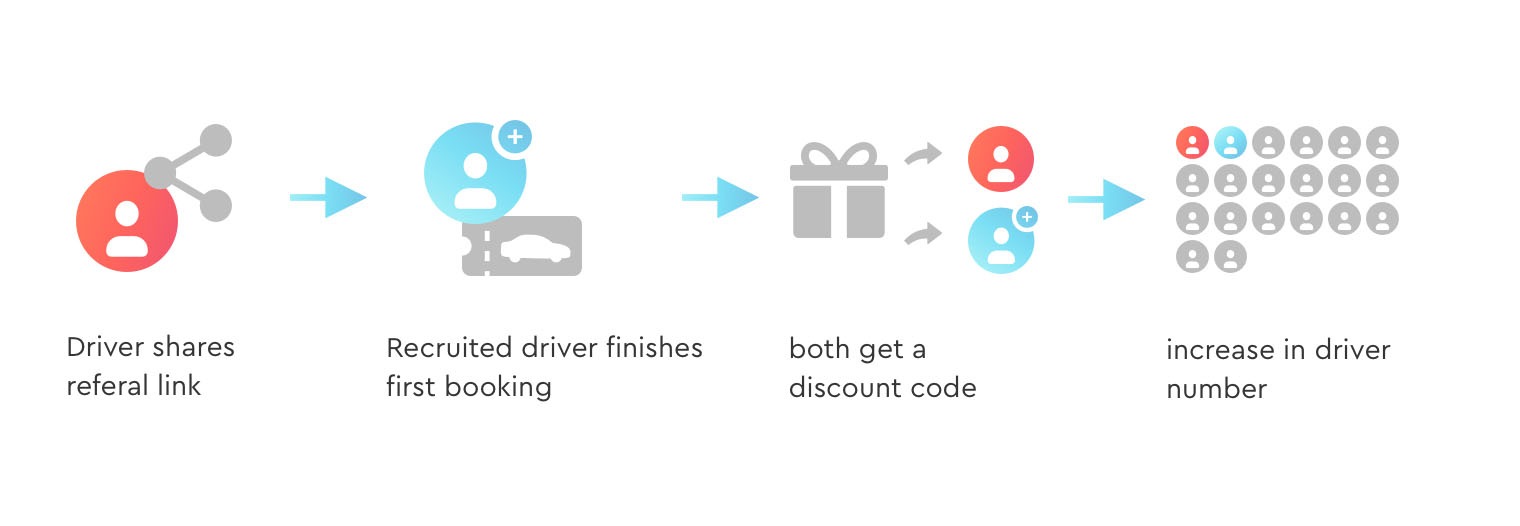

Conclusion
The article shows many different ways to use marketing for shared mobility solutions. These ensure that the sharing offer gains awareness, is used and is recommended to others. Whether and how you use which measure depends entirely on your individual shared mobility offer and the target group. MOQO supports sharing providers with numerous features ranging from informative landing pages to White Label Apps. In addition, sharing providers can use the MOQO Discount Code Manager to flexibly and independently provide discount codes.


